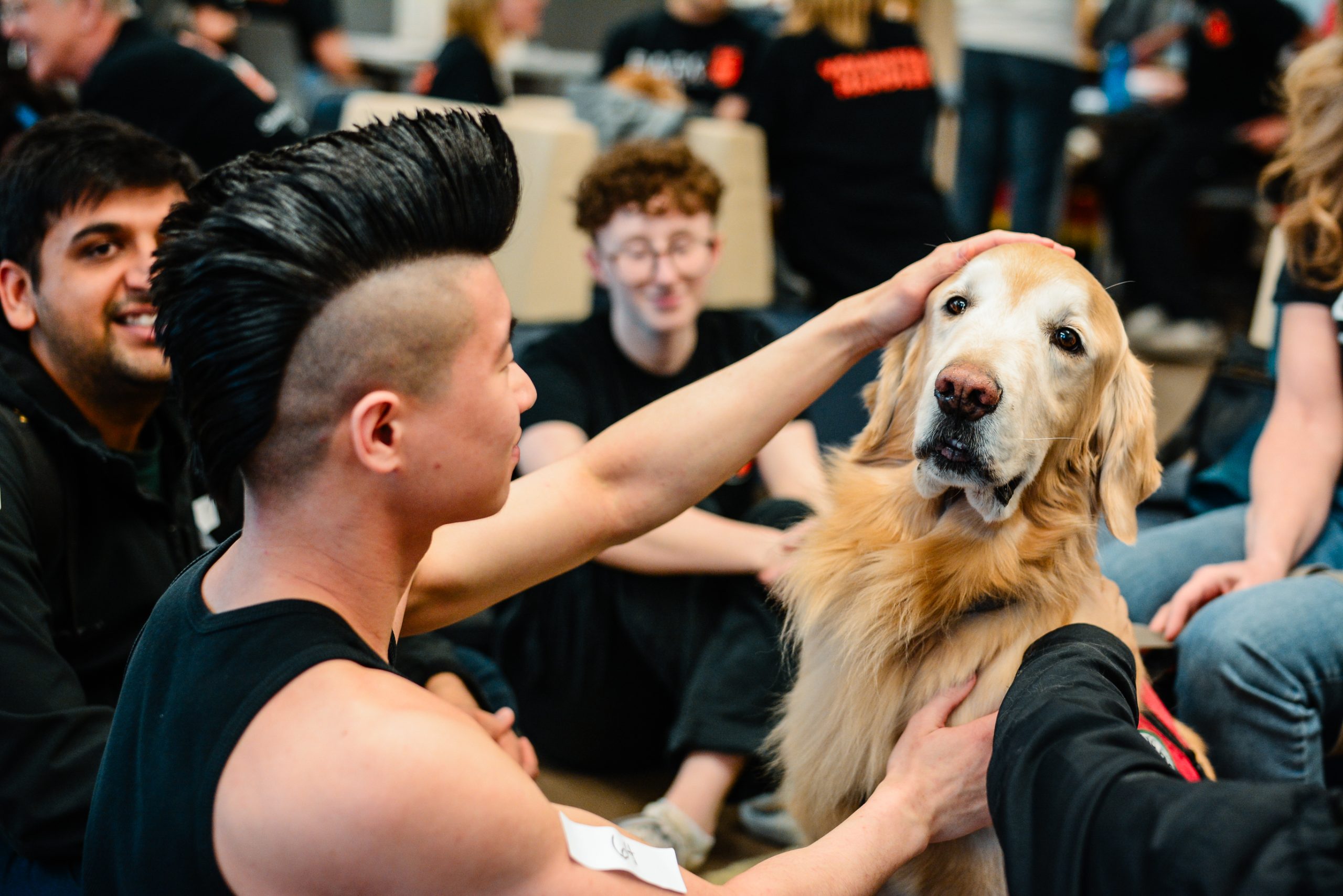 It is not uncommon to see Universities involving therapy dogs in their well-being or educational programs on college campuses across the world. In his latest Psychology Today article, Dogs on the Roster in College Classrooms: What are the benefits of dogs in college classrooms?, Dr. Binfet discusses the benefits of having dogs on campus and in the college classrooms and calls for future research to examine the effect of having a canine companion in class on the instructor themselves.
It is not uncommon to see Universities involving therapy dogs in their well-being or educational programs on college campuses across the world. In his latest Psychology Today article, Dogs on the Roster in College Classrooms: What are the benefits of dogs in college classrooms?, Dr. Binfet discusses the benefits of having dogs on campus and in the college classrooms and calls for future research to examine the effect of having a canine companion in class on the instructor themselves.
“Having had dogs in my lectures for years, I can attest to a softening of the classroom climate — an increase in seeing the instructor as approachable. This is in alignment with the notion of therapy dogs being social catalysts who unite folks who otherwise might not interact..” – Dr. Binfet.
 Having canine-assisted interventions on campus has been found to be a low-barrier, low-cost, accessible, and impactful way of improving well-being and reducing ill-being in students. There are, however, implications and considerations that need to be accounted for, as Dr. Binfet presents in his article. Professors seeking to integrate therapy dogs into their classroom climate must consider the pet policies of their campus, how to ensure welfare of students, staff, faculty, and therapy dogs, and how to determine canine suitability for integration into the campus environment, amongst others.
Having canine-assisted interventions on campus has been found to be a low-barrier, low-cost, accessible, and impactful way of improving well-being and reducing ill-being in students. There are, however, implications and considerations that need to be accounted for, as Dr. Binfet presents in his article. Professors seeking to integrate therapy dogs into their classroom climate must consider the pet policies of their campus, how to ensure welfare of students, staff, faculty, and therapy dogs, and how to determine canine suitability for integration into the campus environment, amongst others.
“Students might have allergies or phobias. The introduction of a dog into a classroom should optimize not compromise students’ learning experience so caution must be taken on these fronts.” – Dr. Binfet
Check out Dr. Binfet’s latest Psychology Today article to learn more about canine companions in the classrooms, canine-assisted interventions, and how to introduce canines to campus!
You can also keep up with the B.A.R.K. program on Instagram @barkubc!
Photos by Freya Green.